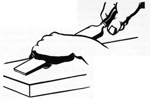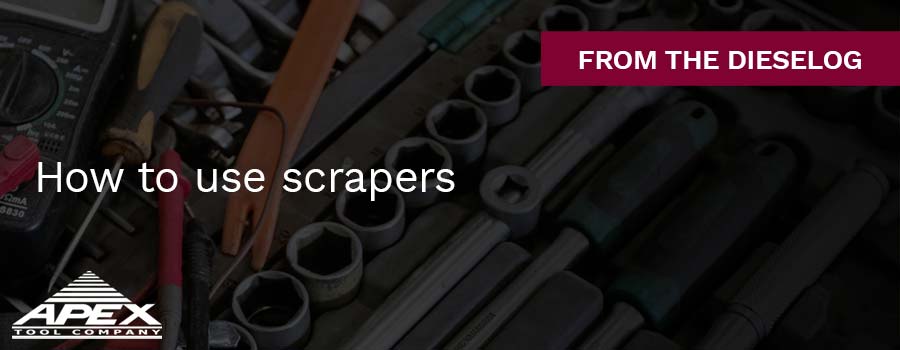Blog
How to use scrapers

What are Scrapers?
Although precision engineering methods make fitting a simple matter, some activities still require that parts be assembled using hand fitting. Scrapers are acknowledged as tools suitable for removing material from parts that need to fit together. For example, a tube may have burrs on its ends preventing a close-fitting shaft from entering it. A scraper can remove these burrs so that the shaft can easily slide in. Scrapers are also used to remove high spots from surfaces to make them flat.
Scrapers come in a large variety of shapes and sizes, mostly depending on what it is required to do. For example, a scraper used to clean animal hides has a large blade with a curved sharp edge. A carpenter uses a scraper for scraping wood and it has a medium sized blade. A goldsmith has a triangular shaped scraper. Usually, a scraper will have a blade with a curved sharp edge.
In general, there are three common types of scrapers. A bearing scraper has a curved blade and two cutting edges culminating in a rounded end or a point. It has a relief on its bottom and an integral shank fitted with a wooden handle.
A similar type of scraper has a triangular blade with three corners, running to a point. Although the blade tapers, the edges are not straight, but they curve slightly. Therefore, a portion of the blade can touch a surface. Usually, these scrapers are of small size and come with a knurled handle.
The third type is the end scraper and looks rather like a chisel. The end is sharp and slightly rounded, which does not permit the corners to touch the work surface and leave scratches.
Scrapers Are Precision Tools
As scrapers have cutting edges, they are precision tools. Never throw them along with spanners and files, but rather wrap them in oiled rags to guard their cutting edges from damage. If you feel that a bearing scraper requires sharpening, grind it first on the bottom on the flat face of a smooth grinding wheel. You can then hand-hone it or oilstone it to a fine edge.
You can sharpen triangular scrapers the same way, but for an end scraper take care to grind a smooth curve. Hone out the grinding marks. This is important, since irregularities or flats on the blades and ragged cutting edges tend to score the work surface, they must be honed out.

Using Scrapers
Scrapers usually have positive contact angles. To use an end scraper, rest the left wrist on the work or on the vice, if the work is mounted in it. Grip the scraper's blade with the left hand while the right hand is holding the handle. Use a movement from the wrist or pulling with the left hand, let the blade slide over the work piece while scraping it. A similar grip may be used with the triangular or bearing scraper.
Where it is not possible to use two hands in close support, you can use a scraper with a negative cutting angle for the blade. That prevents digging in and chatter. Always try to make contact with the work surface keeping sides and points of the blade away from the work.

